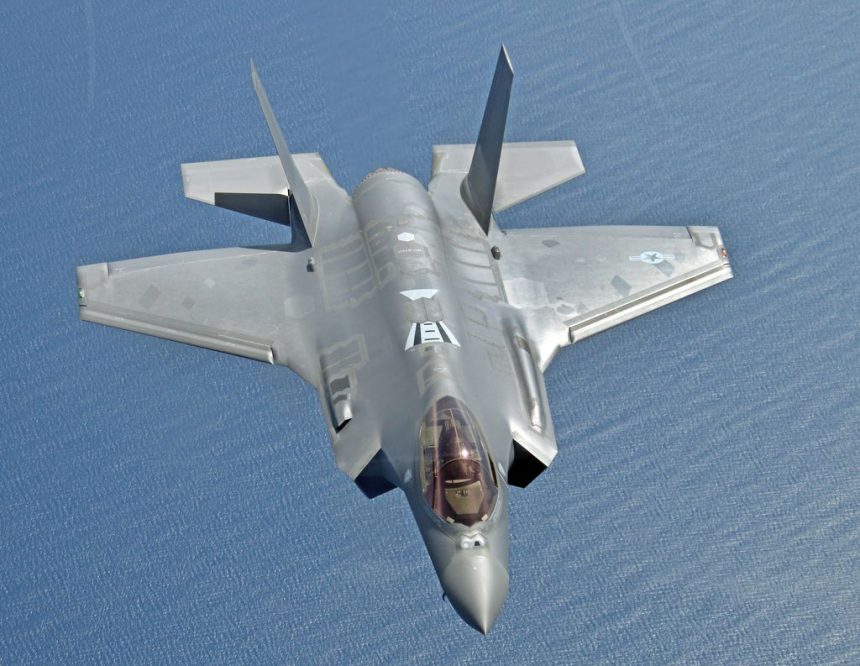Suspected Fuel Problem Results in Grounding of Joint Strike Fighter. Not all of them actually…
All Lockheed Martin F-35 Lightning II Joint Strike Fighters were ordered grounded on Thursday, October 12, 2018 for safety inspections of their fuel flow systems following the September 28, 2018 crash of a U.S. Marine F-35B Lightning II in Beaufort, South Carolina. It was the first crash of an F-35 Joint Strike Fighter since the worldwide program, the largest defense contract in history, began flying in 2006.
“The U.S. Services and international partners have temporarily suspended F-35 flight operations while the enterprise conducts a fleet-wide inspection of a fuel tube within the engine on all F-35 aircraft,” the F-35 Joint Program Office announced in a statement Thursday morning.
The grounding of the F-35 fuels criticism of the program that has been under scrutiny from the start due to cost and program delays. The Joint Strike Fighter program has been characterized as the most expensive defense program in history. A Pentagon study claimed the entire program may exceed $1 trillion USD including maintenance for the entire fleet over its lifespan, not accounting for inflation.
Developed during the emergence of social media, the F-35 program has been a lightning rod for public criticism of defense spending. Recent analytics on TheAviationist.com’s Facebook page reveal that a September 28 story about the first F-35 crash attracted over ten times as many “Likes” than a previous story earlier that week about the first combat mission flown by the U.S. in an F-35. The analytics strongly suggest readers are more attracted to negative news about the F-35 than positive reports about the program.
The fleet-wide grounding of the aircraft is expected to be short-term according to a statement released today by the F-35 program office.
Actually, not all the F-35s have been eventually grounded.
“The Italian Air Force has already completed its inspections and, as it did not find the faulty part, is back to normal flight operations, according to two sources” Lara Seligman reported. Indeed, the Italian F-35A aircraft were reportedly flying today’s late afternoon, launching from Decimomannu, Sardinia, where they are currently deployed to undertake air-to-ground and CAS (Close Air Support) training.
Same for the British F-35B jets, involved in the flight trials from HMS Queen Elizabeth:
Contrary to reports, all F-35 jets have not been grounded. We have paused some F-35 flying as a precautionary measure while we consider the findings of an ongoing enquiry. Flight trials from @HMSQnlz continue and the programme remains on schedule #F35 @thef35 pic.twitter.com/yOOpSAFxZ0
— Ministry of Defence 🇬🇧 (@DefenceHQ) October 11, 2018
The Israeli have halted their operations with the F-35I Adir.
An investigation into the F-35B crash in South Carolina revealed the cause of the crash to be a technical malfunction in the engine’s fuel tube. The Israeli Air Force halted all F-35I flights until all aircraft are tested.
— Israel Defense Forces (@IDFSpokesperson) October 11, 2018
“If suspect fuel tubes are installed, the part will be removed and replaced. If known good fuel tubes are already installed, then those aircraft will be returned to flight status. Inspections are expected to be completed within the next 24 to 48 hours.”
In its official statement on Thursday morning the program office went on to say the grounding of all F-35s worldwide, “is driven from initial data from the ongoing investigation of the F-35B that crashed in the vicinity of Beaufort, South Carolina on 28 September. The aircraft mishap board is continuing its work and the U.S. Marine Corps will provide additional information when it becomes available.”
Top Image: file photo of U.S. F-35A Lightning II. All versions of the aircraft have been temporarily grounded according to official statements (Photo: Tom Demerly/TheAviationist.com.)









